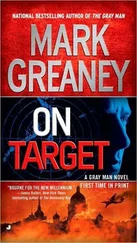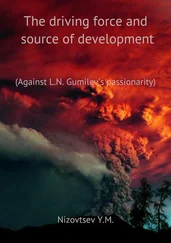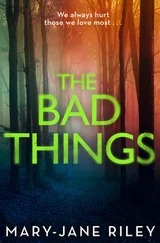“I can tell by that look on your face you know something.”
“I do. CIA has been working on North Korean banking practices for a while now, and this fits right in with this new information. We traced the payment to Précision Aéro back to a bank account in Dubai. There was thirteen million in the account even after the purchase.”
“What is North Korea doing with that kind of cash?”
“We have a theory, and this is why Jay and I weren’t able to meet with you yesterday. We’ve been working on this for three days solid, even before the Emerald Endeavor .”
Ryan leaned closer. “Tell me.”
“Mr. President, there is strong evidence North Korea has restarted production on their rare earth mineral mine at Chongju.”
Ryan just said, “Shit.”
Mary Pat continued, “Analysts at the National Geospatial-Intelligence Agency say there are indications that the rare earth mine in the northwest of the nation is up and running again. Further, they think it is happening without Chinese help.”
Ryan said, “The Chinese were booted from that mine a few months back.”
“A year ago now, yes. Our contacts in China report no change in that relationship, so we find it curious the North Koreans are advancing with the program there. Especially because there is evidence they are actually building up the capacity to process the rare earth ore into refined materials. That’s something light-years ahead of the current level of DPRK sophistication. Even the Chinese had planned on processing the ore at refineries in China.”
“Do the Chinese know the DPRK is going around them?”
“Virtually all of what we know about facts on the ground in North Korea comes from the Chinese, either intercepted communications, the odd HUMINT asset, or open sources. We see nothing about Chongju in any of these resources, so we feel the Chinese are in the dark on this, for now at least.”
Ryan asked, “Do you have the NGA images?”
Mary Pat had learned long ago to expect Ryan to ask to see primary intelligence. She began flipping pages on her tablet, displaying a series of overhead shots of a cluster of buildings.
“What do you think?” Mary Pat asked after a moment.
“I think I’m glad we’ve got analysts at NGA to decipher this for us. I see the strip mine, obviously, but all the tanks and buildings look like they could belong to just about any sort of factory.”
Mary Pat reached to the tablet computer and brought up another page. On it were two images. One was captioned “Chongju dam” and the other “LAMP.”
“The one on the left is the ore-processing facility in North Korea. We are calling it ‘Chongju dam’ because that is the closest named structure, it’s just north of Chongju and west of the mine. And the image here is of the LAMP rare earth–processing plant in Malaysia. Look at the oxidation tanks in both photos.”
Ryan looked them over and agreed the two installations were very similar.
Mary Pat said, “We learned from Chinese intercepts last year that Chongju could bring North Korea as much as twelve trillion dollars in hard assets in the next two to three decades. With that kind of a potential haul, it’s no big surprise they found someone new to help them build and run it.”
Ryan said, “And that someone new is paying them in hard currency for the opportunity. And that connects this to the missile tubes on the Emerald Endeavor .”
Foley nodded. “Right. The North Koreans are taking the offshore money they are getting for future mineral rights and they are using it to buy the ballistic missile technology they need to make their ICBMs operational, because the one thing they do not yet have is an ICBM that can reach the continental United States.”
Ryan almost mumbled to himself. “A matter of time.”
“Yes. It is a cold fact of economics that if North Korea manages to earn just a fraction of the money we think they can earn from that rare earth mineral mine, then they will be able to buy the technology and expertise they need to threaten us.”
Ryan said, “So often in diplomacy, there is a tendency to oversimplify things. Most situations are not the zero-sum games people make them out to be. But this is one such case. Success for North Korea means failure for us. We stop the mining and we stop the spigot of cash that’s fueling their missile program.”
“Exactly. But as long as North Korea has access to banks where they can transact with shell companies for hard currency, we won’t be able to stop them.”
Jack looked out the porthole next to him. They were just off the coast of Maine, heading northeast. The Atlantic looked impossibly blue below. “We’re not going to fire cruise missiles into North Korea to destroy a strip mine. We just have to find out who in the West is bankrolling them and how they are doing it.”
“The ‘how’ is no problem. CIA has compiled a list of thirty banks in ten nations where we have found North Korean offshore accounts.”
“Where are they?”
She looked down at her iPad and found a file, then opened it and read aloud. “Hong Kong, Vanuatu, Brunei, Singapore, Mexico, Switzerland, Malta, Belize, Nicaragua, and the Cayman Islands.”
“Not necessarily places we can apply direct pressure to get the assets frozen.”
“Not at all.”
Frustrated, Ryan said, “What about identifying who is working with North Korea on the mine?”
“Easier said than done, Mr. President. This transaction with Précision Aéro is a dead end. It won’t lead back to the actual mining partners. It only leads to a shell company, which I’m sure was set up by the North Koreans to procure overseas equipment for their missile program.”
Jack turned and looked at his DNI with a grave face. “Mary Pat, I do hate to sound like a broken record, but you know what I’m going to say.”
“You want me to get you more information.”
He nodded. “However you can. A North Korea with an ICBM that can reach the U.S. is a game changer. Not just in Asia, but in the entire planet. We can’t punish the North for violating sanctions because we are already doing that. I might be able to push the UN for a new round of sanctions that will squeeze their accounts in those offshore banks, but that’s a long shot, and it won’t happen overnight. But if you can find out who is helping them with their rare earth mine, I will go after them with a vengeance, and that will, at least, slow down their new source of income.”
Mary Pat saw the task before her as nearly impossible, but she had her assignment from her superior. “Yes, Mr. President.”
19
Lieutenant General Ri Tae-jin flew via helicopter to the Kangdong Airport, just northeast of Pyongyang. With him were eight subordinates and a security detail of eight more, most of whom were flying in a follow-on helo.
The two Russian-made Mi-8s touched down at noon, and Ri stepped out moments later only to climb into the back of a waiting Mercedes limousine. The bulk of his entourage boarded military vehicles and they set off for their destination.
Kangdong was a suburb of sprawling Pyongyang, only thirty miles from Choi Li-hung Square, the center of the capital city, but Choi Ji-hoon had a second palatial residence here, and when he was at Kangdong-gun, anyone who was summoned had to make the two-hour drive on poor roads. Unless, of course, they were high-ranking government or military personnel, at which point they could simply fly.
The North Korean state had an official policy of Songun, which meant “military first.” It was government doctrine that the Chosun Inmingun was fed first, fed best, housed and outfitted using the pick of the nation’s resources. Most party officials reached their status via their military careers, and many high-ranking government department heads were still Chosun Inmingun.
Читать дальше












